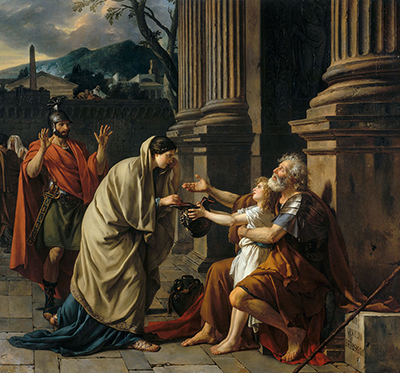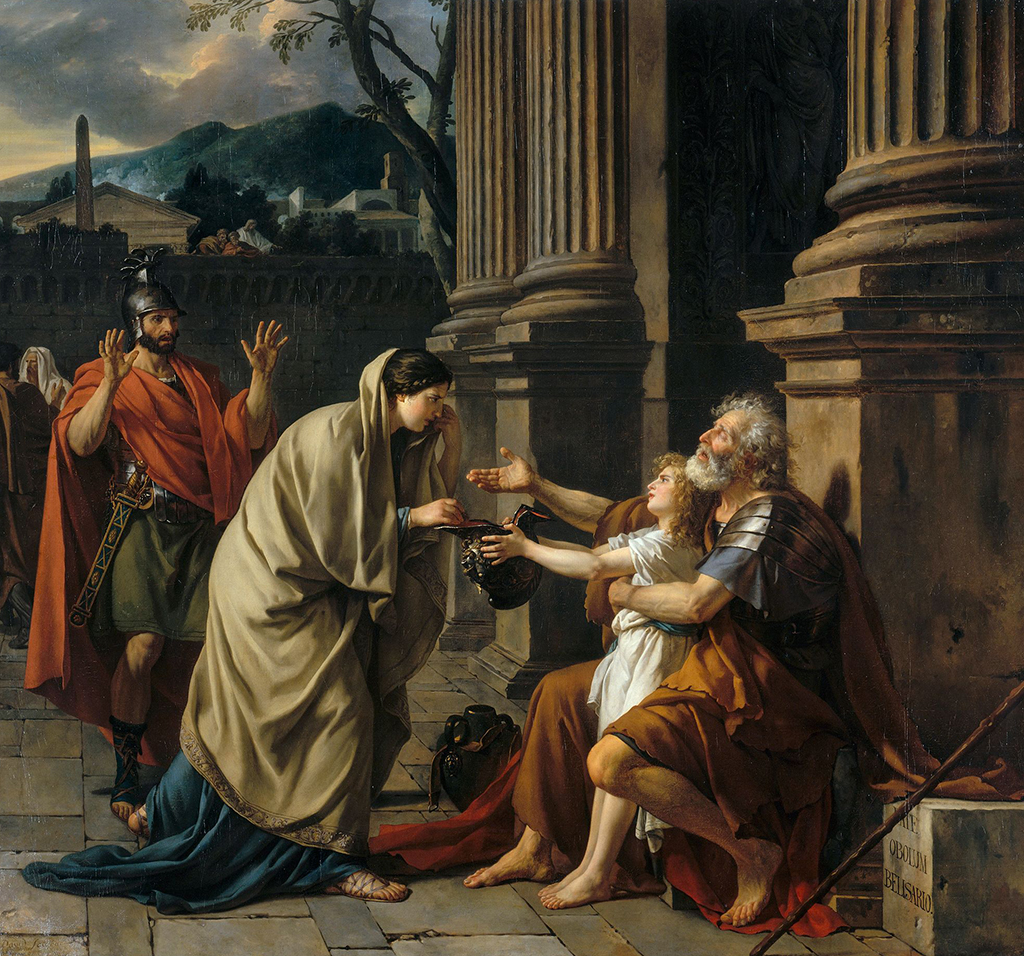Jacques Louis David produced two versions of the same theme, namely Belisarius Begging for Alms. They are relatively similar in content, but the latter was much smaller.
The painting captured in our photograph here was the earlier, larger piece that can now be found in the collection Palais des Beaux-Arts, Lille. It was put together in 1781, where the later version at the Louvre arrived in 1784. The main four figures within both scenes remain relatively the same, but David amends elements of the rest of the scene, particularly the background. It was fairly rare for him to revisit a theme so closely, having produced such a great work in the first place. The artist would take inspiration from classical topics, hence the term Neo-classicism, with Greek literature being one of his most favourite sources of ideas. He was fascinated by the lives of ancient civilisations but also studied more recent populations. In some cases, they would be have been re-invented in more recent times by French poets and novelists, who would have alerted David to some of these figures from the past.
The scene itself captures Byzantine general Belisarius who has fallen on hard times. Despite having defeated the Vandals in 6th century North Africa, he had now been reduced to a blind beggar. It is exactly the sort of riches to rags story that would have appealed to this artist, who also regularly sought out scenes of romantic tragedy for his work. There is clearly a moralistic theme running deep in the veins of this painting, and it is done so in a far from subtle manner. The painting was well received by academics and the public alike on its initial unveiling at the Salon of 1781. One can discuss quite what the message being conveyed here is, but most will argue for the weakness of the elderly as this once fine man is now reduced to a mere shadow of his former self. He also desperately seeks mercy from the kind young woman who offers him attention.
David makes use of a huge canvas for his earlier version, which is around three metres tall and wide. There are several huge pillars which leap up into the sky, whilst the old man is symbolically sat down at the bottom of them - he has fallen so far from his earlier prowess. The artist keeps these pillars virtually identical in both paintings and so was clearly happy with them first time round. There is also a carefully crafted tiled floor which makes its way past this building. The main compositional change between the two is that in the second Louvre piece the soldier behind is visually much more distant from the woman, child and old man. Perhaps the artist wanted to underscore his opinion over the relative kindness of this woman and the contrasting behaviour of the soldier behind.





